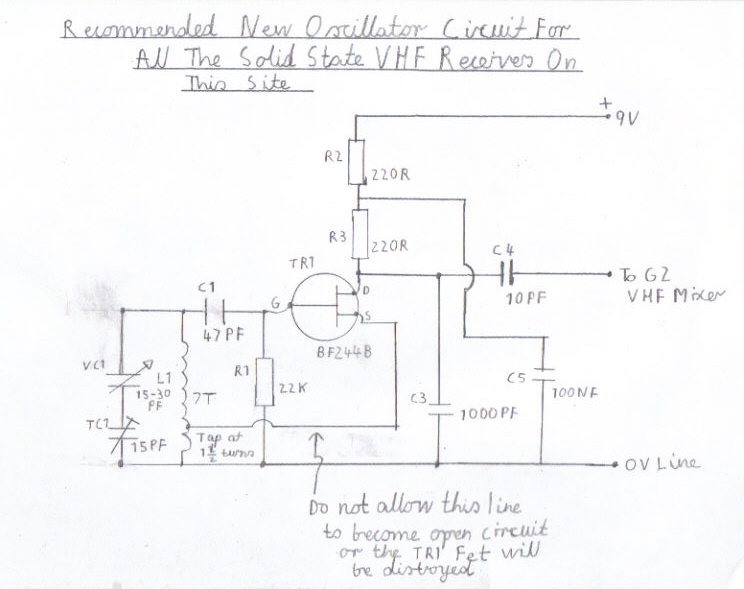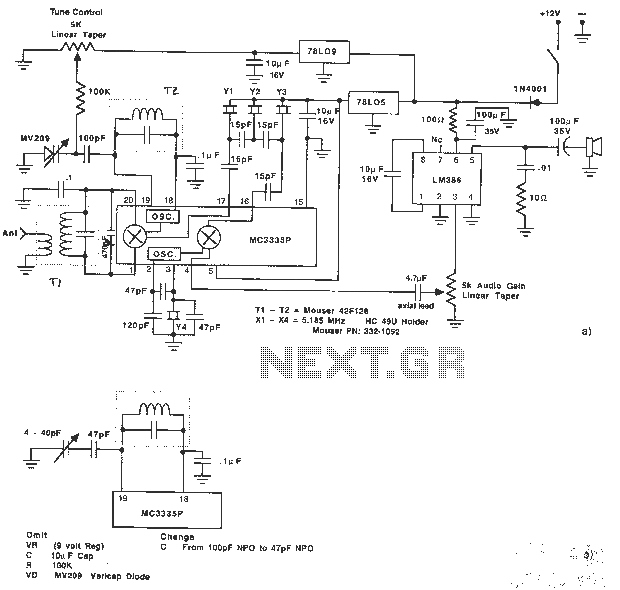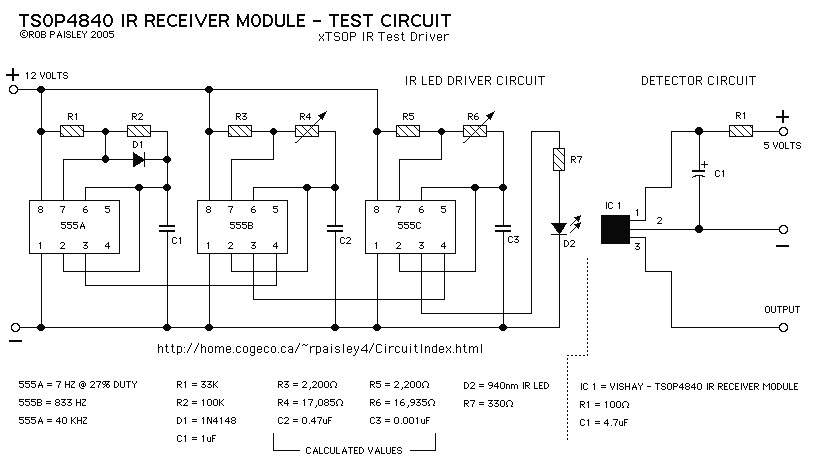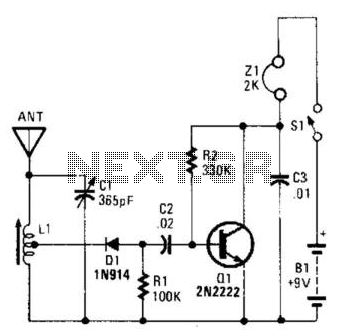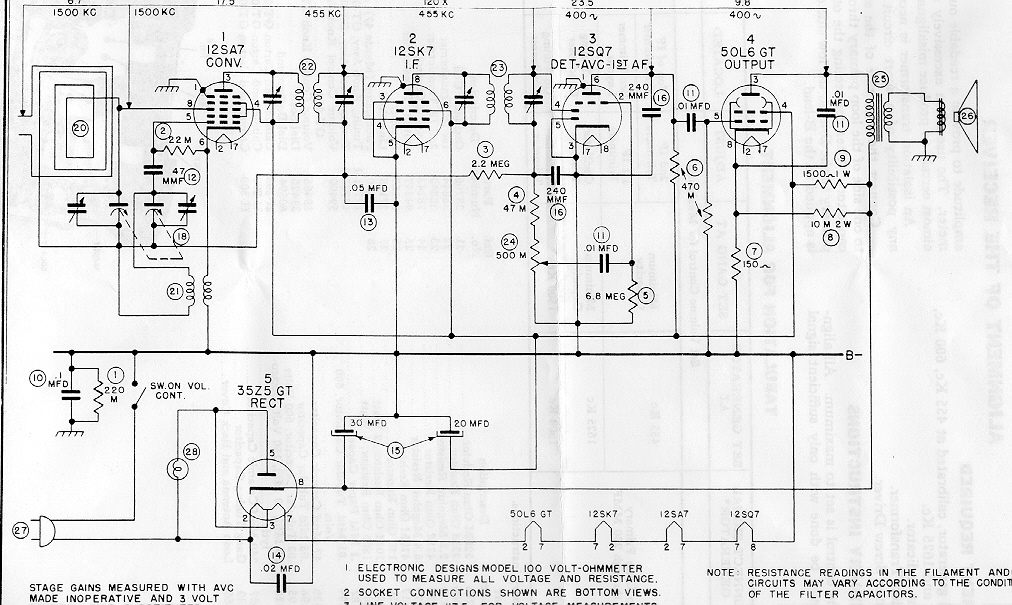
SA2132 AM/FM RADIO RECEIVER

The SA605 is a high-performance monolithic low-power FM intermediate frequency (IF) system that integrates a mixer, oscillator, two limiting intermediate frequency amplifiers, a quadrature detector, muting, a logarithmic received signal strength indicator (RSSI), and a voltage regulator. It combines the functions of the Signetics SA602 and SA604A, but offers a higher mixer input intercept point, a wider IF bandwidth of 25 MHz, and a temperature-compensated RSSI and limiters, allowing for enhanced performance in various applications. The SA605 is available in multiple packages, including a 20-lead dual-in-line plastic package, a 20-lead surface-mounted miniature package (SOL), and a 20-lead shrink small outline package (SSOP). The SA605 and SA615 are functionally identical, with differences in guaranteed specifications. The SA615 has a higher supply current (ICC), lower input third-order intercept point, lower conversion mixer gain, lower limiter gain, lower AM rejection, lower signal-to-noise and distortion (SINAD), higher total harmonic distortion (THD), and higher RSSI error compared to the SA605. Both devices comply with the EIA specifications for AMPS and TACS cellular radio applications. For further technical details, refer to application notes AN1994, 1995, and 1996, which provide example application diagrams, a comprehensive product overview, and reference artwork.
The SA605 integrated circuit (IC) is designed for high-performance FM applications, making it suitable for use in radio receivers and other communication devices. Its monolithic design allows for compact integration of multiple functions, which significantly reduces the number of external components required in a typical application. The inclusion of a mixer and oscillator in the same IC facilitates the down-conversion of RF signals to intermediate frequencies, which is essential for effective signal processing.
The dual limiting intermediate frequency amplifiers ensure that the received signals are amplified to appropriate levels while maintaining signal integrity, thus enhancing the overall performance of the system. The quadrature detector is crucial for demodulating FM signals, allowing for accurate recovery of the original audio or data signal from the modulated carrier wave.
The temperature-compensated RSSI provides a reliable indication of the signal strength, which is essential for applications that require robust performance across varying environmental conditions. This feature, combined with the muting function, helps to improve the user experience by reducing unwanted noise during signal transitions or when the signal is weak.
The device's wide IF bandwidth of 25 MHz allows it to handle a range of frequencies, making it versatile for various applications, including cellular radio systems. The differences between the SA605 and SA615 highlight the importance of selecting the appropriate device based on specific application requirements, as the SA615 may be more suitable for scenarios where lower performance specifications are acceptable.
In conclusion, the SA605 is a comprehensive solution for FM IF processing, combining multiple essential functions into a single package, thereby enhancing efficiency and performance in modern communication systems. Its compliance with EIA specifications ensures its suitability for commercial use in cellular radio applications, making it a valuable component for engineers and designers in the field of electronics.The SA605 is a high performance monolithic low-power FM IF system incorporating a mixer Oscillator two limiting intermediate frequency Amplifiers quadrature detector, muting, logarithmic received signal strength indicator (RSSI), and voltage Regulator The SA605 combines the functions of Signetics, SA602 and SA604A but features a higher mixer input intercept point, higher IF bandwidth (25MHz) and temperature compensated RSSI and limiters permitting higher performance application. The SA605 is available in 20-lead dual-in-line plastic, 20-lead SOL (surface-mounted miniature package) and 20-lead SSOP (shrink small outline package).
The SA605 and SA615 are functionally the same device types. The difference between the two devices lies in the guaranteed specifications. The SA615 has a higher ICC, lower input third order intercept point, lower conversion mixer gain, lower limiter gain, lower AM rejection, lower SINAD, higher THD, and higher RSSI error than the SA605. Both the SA605 and SA615 devices will meet the EIA specifications for AMPS and TACS cellular Radio applications.
For additional technical information please refer to application notes AN1994, 1995 and 1996, which include example application diagrams, a complete overview of the product, and artwork for reference. 🔗 External reference
The SA605 integrated circuit (IC) is designed for high-performance FM applications, making it suitable for use in radio receivers and other communication devices. Its monolithic design allows for compact integration of multiple functions, which significantly reduces the number of external components required in a typical application. The inclusion of a mixer and oscillator in the same IC facilitates the down-conversion of RF signals to intermediate frequencies, which is essential for effective signal processing.
The dual limiting intermediate frequency amplifiers ensure that the received signals are amplified to appropriate levels while maintaining signal integrity, thus enhancing the overall performance of the system. The quadrature detector is crucial for demodulating FM signals, allowing for accurate recovery of the original audio or data signal from the modulated carrier wave.
The temperature-compensated RSSI provides a reliable indication of the signal strength, which is essential for applications that require robust performance across varying environmental conditions. This feature, combined with the muting function, helps to improve the user experience by reducing unwanted noise during signal transitions or when the signal is weak.
The device's wide IF bandwidth of 25 MHz allows it to handle a range of frequencies, making it versatile for various applications, including cellular radio systems. The differences between the SA605 and SA615 highlight the importance of selecting the appropriate device based on specific application requirements, as the SA615 may be more suitable for scenarios where lower performance specifications are acceptable.
In conclusion, the SA605 is a comprehensive solution for FM IF processing, combining multiple essential functions into a single package, thereby enhancing efficiency and performance in modern communication systems. Its compliance with EIA specifications ensures its suitability for commercial use in cellular radio applications, making it a valuable component for engineers and designers in the field of electronics.The SA605 is a high performance monolithic low-power FM IF system incorporating a mixer Oscillator two limiting intermediate frequency Amplifiers quadrature detector, muting, logarithmic received signal strength indicator (RSSI), and voltage Regulator The SA605 combines the functions of Signetics, SA602 and SA604A but features a higher mixer input intercept point, higher IF bandwidth (25MHz) and temperature compensated RSSI and limiters permitting higher performance application. The SA605 is available in 20-lead dual-in-line plastic, 20-lead SOL (surface-mounted miniature package) and 20-lead SSOP (shrink small outline package).
The SA605 and SA615 are functionally the same device types. The difference between the two devices lies in the guaranteed specifications. The SA615 has a higher ICC, lower input third order intercept point, lower conversion mixer gain, lower limiter gain, lower AM rejection, lower SINAD, higher THD, and higher RSSI error than the SA605. Both the SA605 and SA615 devices will meet the EIA specifications for AMPS and TACS cellular Radio applications.
For additional technical information please refer to application notes AN1994, 1995 and 1996, which include example application diagrams, a complete overview of the product, and artwork for reference. 🔗 External reference

